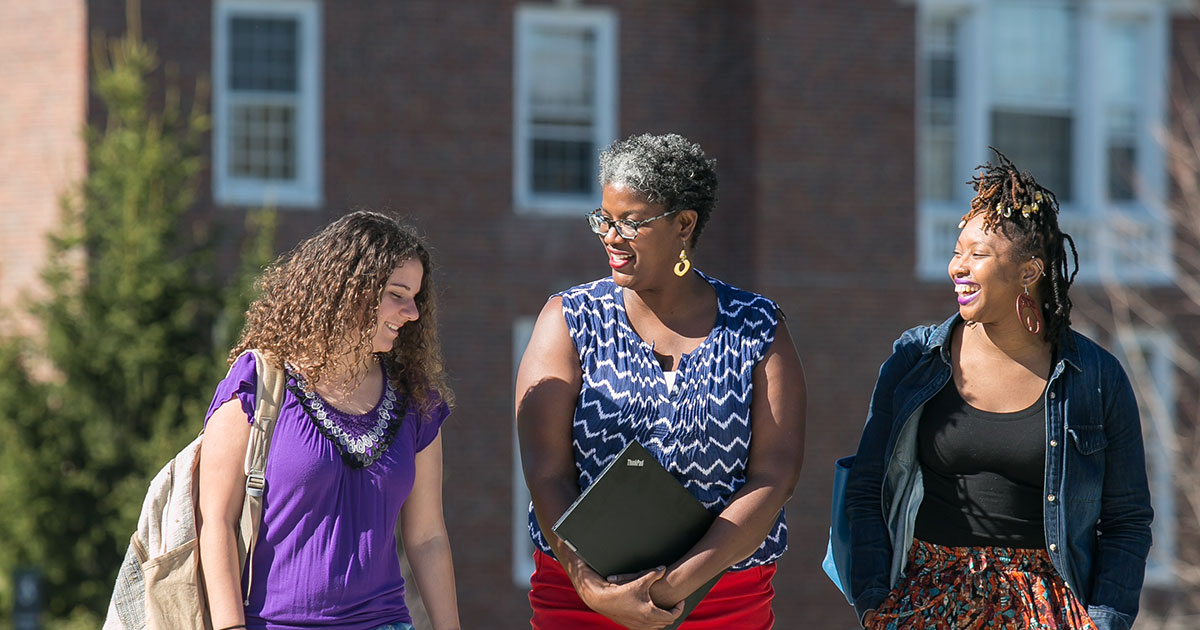From the Ground Up: New Faculty Committee on Diversity, Equity, and Inclusion

Passionate and motivated by what is being called a long overdue awakening to systemic racism, a group of Babson faculty are working to lead change from within.
“There is a mandate from the world for Babson to lead the change we envision,” said Vice President of Academic Affairs and Dean of the College Ken Matsuno. “We must do better.”
This change will come in the form of a new committee: Dean of Faculty, Faculty Committee for Diversity, Equity, Inclusion, and Development. Or, DoF Inclusive Excellence Committee, for short.
“We should have done this yesterday,” said Associate Professor Tina Opie, recently named chair.
Inclusive Excellence
In process since August 2019, this committee kicked into high gear late this spring.
While additional Babson efforts, including the Diversity and Inclusion Council and the Board of Trustees Diversity, Equity, and Inclusion Committee, focus more broadly on Babson’s overall strategy, this group will focus on faculty training, development, and support and the broader learning environment faculty create at Babson.
“The idea is for us to have a true and well-defined scope and structure,” shared Opie that reflects critical input from faculty.
More specifically, and building from the Inclusive Excellence Model introduced by Chief Inclusive Excellence Officer Sadie Burton-Goss, the committee is planning strategic efforts to embed diversity, equity, and inclusion into core components of the faculty employment cycle, workforce planning, recruiting, onboarding, performance management, training and support, succession planning, compensation and benefits, and critical skills gap analysis.
“It’s very hard for me to think of any area (of interest or study) where diversity, equity, and inclusion do not need to be addressed.”
Tina Opie, Associate Professor and Chair of the DoF Inclusive Excellence Committee
Embedding Diversity, Equity, and Inclusion in a Babson Education
Opie joins Matsuno, Burton-Goss, Assistant Professor Anjali Bal, Associate Professor Kankana Mukherjee, Professor Mark Potter, and Associate Professor Jerome Taillard, in what they are calling the core committee. Though, the committee has proposed a structure that will have two divisional ambassadors in each of Babson’s 10 faculty divisions in the coming months.
One of the main objectives is for the College to successfully integrate diversity, equity, and inclusion (DE&I) into the curriculum for each and every class.
“It’s very hard for me to think of any area (of interest or study) where DE&I do not need to be addressed, or are not relevant,” said Opie.
Take STEM, for instance. “Have you heard what’s happening in Silicon Valley?” related to the lack of diversity, asks Opie. “Or that facial recognition technology doesn’t properly recognize people with melanin in their skin?”
If your leadership team is homogeneous, which is often the case in this industry, says Opie, they are simply at a disadvantage when it comes to solving increasingly complex and global issues.
“This is a big part of what we’re doing,” she said, thinking strategically about Babson students as entrepreneurial leaders. “We aim to have a broad and deep understanding of how we can improve our curriculum for overall student experience.”
“There is a mandate from the world for Babson to lead the change we envision.”
Ken Matsuno, Vice President of Academic Affairs and Dean of the College
Practicing What We Teach
Much like what she teaches her students in Foundations of Management and Entrepreneurship (FME), Opie advises that “you get the behaviors that you motivate. You measure what matters, and what matters is what you measure.”
In addition to recruiting, training, and other workforce-related initiatives, faculty are currently in the process of revising Babson’s curriculum to consider more classes that teach about anti-racism and developing cases with more diverse protagonists across Babson classes. These are just two examples of what is underway to embed DE&I in the curriculum.
The goal? That Babson becomes “Babson Brave,” what Opie refers to as an environment in which “every graduate is known to be fluent in diversity, equity, and inclusion,” said Opie. “Graduates have each explored their own racial attitudes … they know the difference between racism, prejudice, and discrimination … they understand what their attitudes are about race, where those attitudes came from, and how those attitudes interact with people who think differently.
“Imagine if every single Babson grad can say they have done that level of introspection and connection,” said Opie. “That to me is a competitive advantage. Especially now.”
Posted in Community





